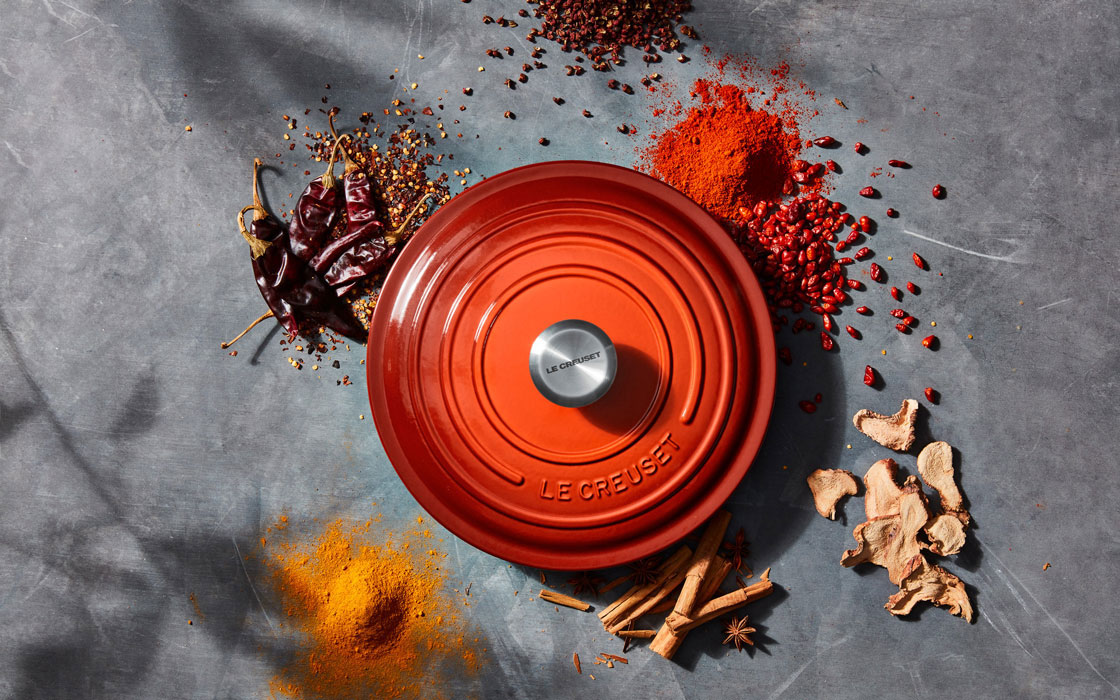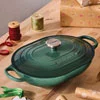One thing we’ve learned from working with chef partners over the years is that a well-stocked spice cabinet is crucial. Spices enhance the natural flavor of foods, helping to balance a recipe or dish while adding vibrant complexity and piquancy – it’s an easy and delicious way to take your cooking to the next level.
Typically a seed, fruit, root, bark or other part of the plant (other than leaves), markets today have a large selection of spices and spice blends both whole and ground. But how do you know which spice to choose for any given dish? You can always follow a trusted recipe, but if you want to get creative in the kitchen it helps to understand the ‘why’ behind using a spice before you add a dash to the pot. Here are some of our favorite ways to bring a little spice to your food and cooking.

Heat up a Dish
One of the most common reasons to use spices is too add heat to a dish. Spices like cayenne, black pepper and horseradish are perfect for adding a pop of tongue-tingling flavor. And while we think of spices as dried flavorings, the category also includes elements like fresh ginger, and of course hot chile peppers, that can add both heat and flavor to a dish. You might choose a spice like dried cayenne when you’re just looking for a burst of heat, whereas fresh habaneros add heat along with fruity flavor like in Justin Chapple’s Vibrant Hot Chile Sauce recipe.
Vibrant Hot Chile Sauce
Add Complexity with Spice Blends
Spice blends are a great way to add heat, color and seasoning all in one pinch. There are many high-quality blends on the market – we’re partial to the ones from Chef David Chang at Momofuku – but it’s important to note that they do lose flavor quickly on the shelf. So if you have the time to grind your own spices, it’s well worth the effort. Be sure to toast the spices first to bring out the aromatic oils to further their complexity, and then grind them in a Mortar and Pestle to release the full flavor of the delicate oils. Try this with our recipe for a Harissa Spice blend, a typical seasoning from North Africa.
Harissa Spice Blend
Punch up the Color
Sometimes a spice is chosen primarily for the color it imparts. Deep yellow turmeric added to a curry adds brightness to the dish, while the flavor it contributes is a subtle secondary consideration. And even the most expensive spice in the world, saffron, is valued for the vibrant yellow color it imparts as much as for the heady flavor and aroma. The bright red threads that dot the final dish are a distinctive sign of luxury. For example, our classic Shrimp and Chorizo Paella recipe includes a small amount of saffron alongside deep red paprika to give the final dish it’s signature burnt orange color.
Shrimp and Chorizo Paella
Use for Health Benefits
Spices have historically been used across many cultures for the health benefits they bring to our food. Ginger is one of the most well-known, and is especially useful for treating nausea or an upset stomach. The use of healing spices is particularly common in spice and curry blends, and turmeric, fenugreek and cinnamon are common additions that have known restorative benefits. Our Asparagus Soup recipe from Chef Ludo Lefebvre is flavored with vibrant Vadouvan Curry, which is a French spice blend that includes both turmeric and fenugreek.
Asparagus Soup with Vadouvan Curry
Enhance the Natural Flavors
Some spices are the supporting players that make the lead ingredients shine. They complement and enhance recipes, but don’t always dominate the dish. Think about how vanilla subtly adds sweetness to anything from rich chocolate cake to luscious Crème Bruleé. Nutmeg, cloves and cardamom are humble spices that add depth and warmth to both sweet and savory dishes, like in our Ginger and Cardamom Pie recipe. And of course, there’s a good reason we keep salt and pepper mills handy at dinnertime. These everyday spices boost and enhance the natural flavors of food and help bring a dish into balance.
Ginger and Cardamom Spiced Strawberry Pie






